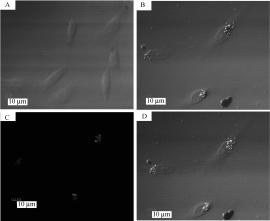1 Chen, L.-J. Sci. Technol. Inf. 2006, 32, 29 (in Chinese). (陈丽娟, 科技资讯, 2006, 32, 29.)
2 Fu, L.-J.; Li, J.-X.; Yang, X.-G.; Wang, K. J. Biol. Inorg.Chem. 2009, 14, 219.

3 Shigematsu, T. Ther. Apheresis Dial. 2008, 12, 55.

4 Jiang, W.-H.; Chen, D.; Meng, X.-T. J. Chin. Rare Earth Soc. 2004, 22, 292 (in Chinese). (姜文华, 陈东, 孟晓婷, 中国稀土学报, 2004, 22, 292.)
5 Sahoo, S. K.; Labhasetwar, V. Drug Disc. Today 2003, 8, 1112.

6 Zhu, R.-R.; Wang, S.-L.; Chen, X.-P.; Sun, X.-H.; Zhang, R.; Yao, S.-D. Acta Chim. Sinica 2006, 64, 2161 (in Chinese). (朱融融, 汪世龙, 陈小平, 孙晓宇, 张蕤, 姚思德, 化学 学报, 2006, 64, 2161.)
7 Guan, H.-F.; Liao, L.-W. Guizhou Chem. Ind. 2004, 29, 30 (in Chinese). (管海凤, 廖列文, 贵州化工, 2004, 29, 30.)
8 Chen, Y.; Yang, L.-S.; Feng, C.; Wen, L.-P. Biochem. Biophys. Res. Commun. 2005, 337, 52.

9 Park, E. J.; Choi, J.; Park, Y. K.; Park, K. Toxicology 2008, 245, 90.

10 Chen, G. Rare Earth Inf. 2002, 12, 12 (in Chinese). (陈刚, 稀土信息, 2002, 12, 12.)
11 Liu, J.; Wei, C.-Y.; Yang, P. J. Chin. Rare Earth Soc. 2011, 29, 112 (in Chinese). (刘洁, 魏春英, 杨频, 中国稀土学报, 2011, 29, 112.)
12 Zhou, X.-P.; Hou, H.-Z.; Li, Y.-Q.; Yang, P. Acta Chim. Sinica 2011, 69, 106 (in Chinese). (周雪萍, 侯惠智, 李英奇, 杨频, 化学学报, 2011, 69, 106.)
13 Li, Y. M.S. Thesis, Jilin University, Changchun, 2010 (in Chinese). (李阳, 硕士论文, 吉林大学, 长春, 2010.)

14 Yu, L. M.S. Thesis, University of Science and Technology of China, Hefei, 2009 (in Chinese). (于乐,硕士论文, 中国科学技术大学, 合肥, 2009.)

15 Jin, H.-F.; Yuan, L.; Qiu, L.; Wu, K. Orthopaedic Biomechanics Materials and Clinical Study, 2009, 6, 33 (in Chinese). (金华芳, 袁琳, 邱乐, 武奎, 生物骨科材料与临床研究, 2009, 6, 33.)
16 Dai, Y.-C.; Li, J.; Yu, L.; Dai, G.; Hu, A.-G.; Yuan, L.-Y.; Wen, Z. In Vitro Cell. Dev. Biol. Anim. 2002, 38, 373.

17 Shi, P.; Huang, Z.-W. Biometals 2005, 18, 89.

18 Zhang, Y.; Fu, L.-J.; Li, J.-X.; Yang, X.-G.; Yang, X.-D.; Wang, K. Biometals 2009, 22, 511.

19 Yang, B.-S.; Harris, W.-R. Acta Chim. Sinica 1999, 57, 503 (in Chinese). (杨斌盛, Harris, W. R. 化学学报, 1999, 57, 503.)












